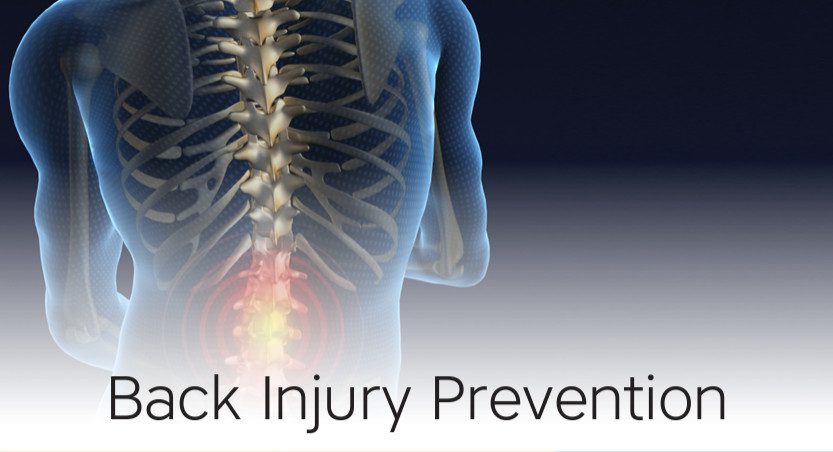
Courtesy of SBAM Approved Partner, Accident Fund
Back pain at work can affect everyone from long-haul truckers and manual laborers to food service and hospitality workers. Even desk jockeys who occasionally lift something heavy are at risk. Prevention is the best way to avoid a workplace back injury.
These tips from the Accident Fund Resource Library can help prevent back injuries. in the workplace. As with any exercise program, it is recommended that you check with your physician prior to starting if you have a medical condition or concerns.
Get Close
The further the load is from the center line of your body, the greater the strain imposed on your back. If need be, squat down to lift the load and pull it between your legs. This gets it closer to the center of your body and helps prevent the need to bend at the waist. However, since your leg muscles are the largest muscles in your body, they are the biggest energy consumers. Repeated squatting can be very fatiguing, and reduces a person’s ability to lift in this manner for any length of time. For repeated lifting, other strategies must be used.
Avoid Heavy Objects Below The Knees
Try to see that heavy objects are placed and stored above knee level and below shoulder level. If you suspect the load is too heavy to be lifted comfortably, don’t chance it. Use a mechanical aid, break the load down into its component parts, or get help. The most common cause of back injury is overloading.
Keep Your Back Straight
This means don’t bend at the waist when reaching to lift an object. Keep the natural arch in your lower back, which distributes the load evenly over the surface of spinal disks and is less stressful than if the disk is pinched between vertebrae. Bending principally from the hips is acceptable if you maintain the arch in your back, rather than bending at the waist.
Use Mental Glue
If you carry a load in one hand, such as when carrying a tool box, place your free hand on the outside of your thigh and mentally “glue” it into position. This will help you maintain correct back alignment rather than lifting and tilting to one side. When carrying a heavy load, side bending can be just as stressful to the spine as bending forward.
Move Your Feet
If you lift a load and need to place it off to one side, turn by moving your feet. After repeated lifts, you might find yourself getting a bit sloppy and forgetting to move your feet. You can overcome this tendency if the place you set the load down is at least one step away from where it is lifted.
Loosen Up
Research has shown that trunk flexibility and mobility is significantly lower in the morning than later in the day, increasing the number and severity of back strains at this time. A few minutes of stretching can warm up cold stiff muscles and tendons and help you avoid an injury. All professional athletes know this — “industrial athletes” should too!
Along with the opportunity for up-front savings on premium and the potential to earn dividends on loss performance, all SBAM group members get full access to our Resource Library. There you’ll find assessment tools, training, plans, tip sheets, posters and more to help you and your team maintain a culture of safety. Click here to learn more!